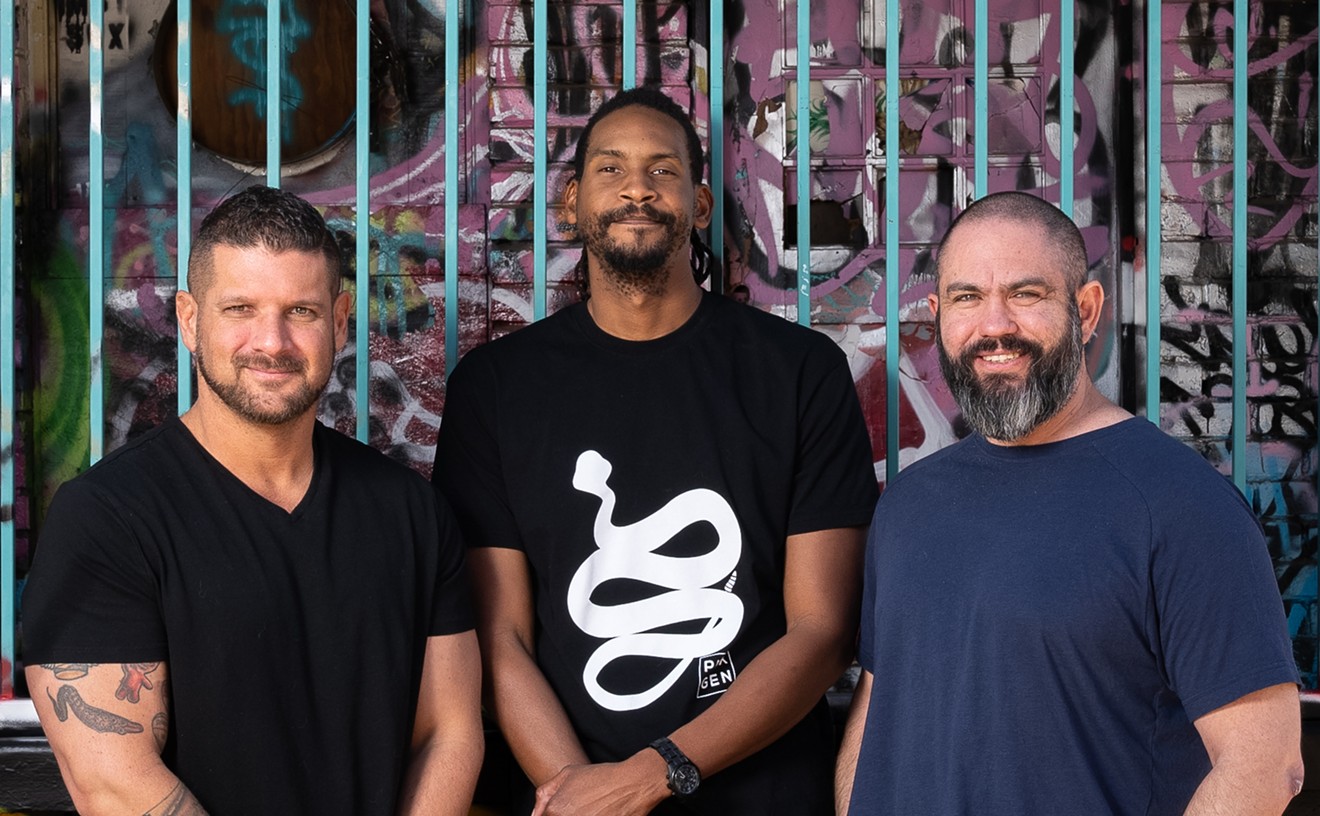Reports of vivified corpses with a bad case of the cannibalistic munchies scatter over the radio; back at the dorms, panicked Webcasts confirm the new reality, even as the Department of Homeland Security, raising the national-threat level to orange, spins the incipient apocalypse as mass psychosis brought on by a "previously unknown viral strain." Please. Everyone knows you can't trust The Man, and while you might find a more or less rational zombie infestation in a civilized place like England, traceable to an outbreak of the Rage virus (28 Days Later), here in America that shit just happens.
To wit: the savage satires of George A. Romero, master of the inexplicable flesh-eating allegory, whose magisterial zombie cycle rose from the shadows in Night of the Living Dead (1968), proceeded to Dawn (1978), then persisted through Day (1985), only to find its terrors (spiritual and social) totalized across the Land (2005). Nominally set in rural Pennsylvania (but shot outside Toronto), Romero's latest update, Diary of the Dead, unfolds in the ephemeral realm of electronic mass media. Told as a collage of video footage assembled from multiple platforms — first-person reportage, surveillance cameras, YouTube, cell-phone cameras — Diary pictures the spiritual stasis and moral collapse of a people resigned to hopelessness: "All that's left to do," says one of our heroes, "is record what's happening for whoever remains when it's over." When there is no more room in hell, the dead will create a MySpace page.
There's a lot of huff and puff here about the media and its messages as Diary tracks the camera-wielding co-eds on the road to nowhere in a zombie-splattered Winnebago. The dialogue can be overly self-reflexive ("If it's not on camera, it doesn't exist!"); the sharpest words tend to sneak in at the margins of the sound design ("The problem used to be people crossing the border," a radio pundit comments). Visually, Romero's ersatz-DIY experiment isn't as suave as Brian De Palma's similar effort in the recent and risible Redacted, nor as exactingly engineered as the video convulsions of Cloverfield, but its scrappy, ultra-low-budget edges are part of its charm. Romero initially conceived the project for Web-only broadcast, and if Papa Zombie isn't quite the second coming of Marshall McLuhan when it comes to media critique, his return to small-scale indie filmmaking delivers big genre kicks.
The devil's in the details, and Diary is diabolically resourceful within its circumscribed framework. Conceptually abstract as it is, the movie is vividly grounded in place: the institutional banality of university housing and deserted hospitals (priceless defibrillator-to-the-head bit here); the cluttered, shadow-strewn warehouse hideout where the kids meet up with a radicalized band of black survivors; the frightfully porous farmhouse of Samuel, a dynamite-chucking, deaf-mute Amish zombie slayer; the suburban McMansion, replete with six bathrooms, indoor pool, and steel-reinforced panic room ("We can sit and play Nintendo until this whole thing blows over") where Diary climaxes as a kind of Zombie Year at Marienbad.
There are shades of 28 Days Later here, though Romero claims never to have seen it. He has been watching the news, however, and Diary makes chilling appropriation of Katrina footage to double for the zombie disaster. To what end? "I don't try to answer any questions or preach," Romero says. "My personality and my opinions come through in the satire of the films, but I think of them as a snapshot of the time. I have this device, or conceit, where something happens in the world and I can say, 'Ooo, I'll talk about that — and I can throw zombies in it! And get it made!' You know, it's kind of my ticket to ride."
Romero's 40-year-ride through the twist and turns of Undead America is motored not by the refinement of his ideas (late-'70's consumer culture = zombies at a shopping mall) but the brute force of their execution (sociocultural critique comes alive when it sinks its teeth, literally, into human viscera). The movie comes first, the memorandum second. "I don't want to make this kind of movie," whines a Diary protag in the midst of exploding brains. "I don't want to make this kind of movie, either," comes the reply, "but I can't change the script."










